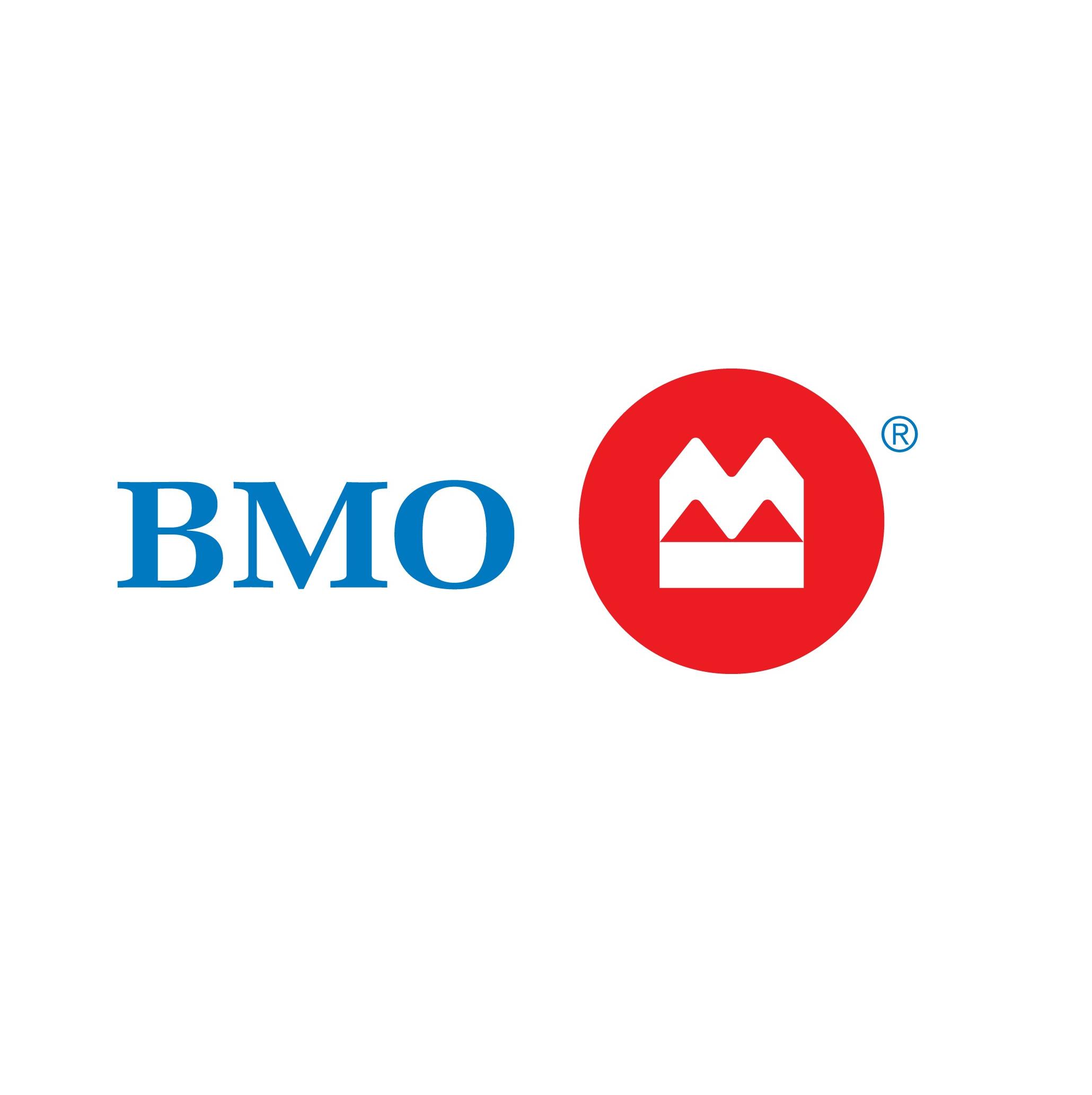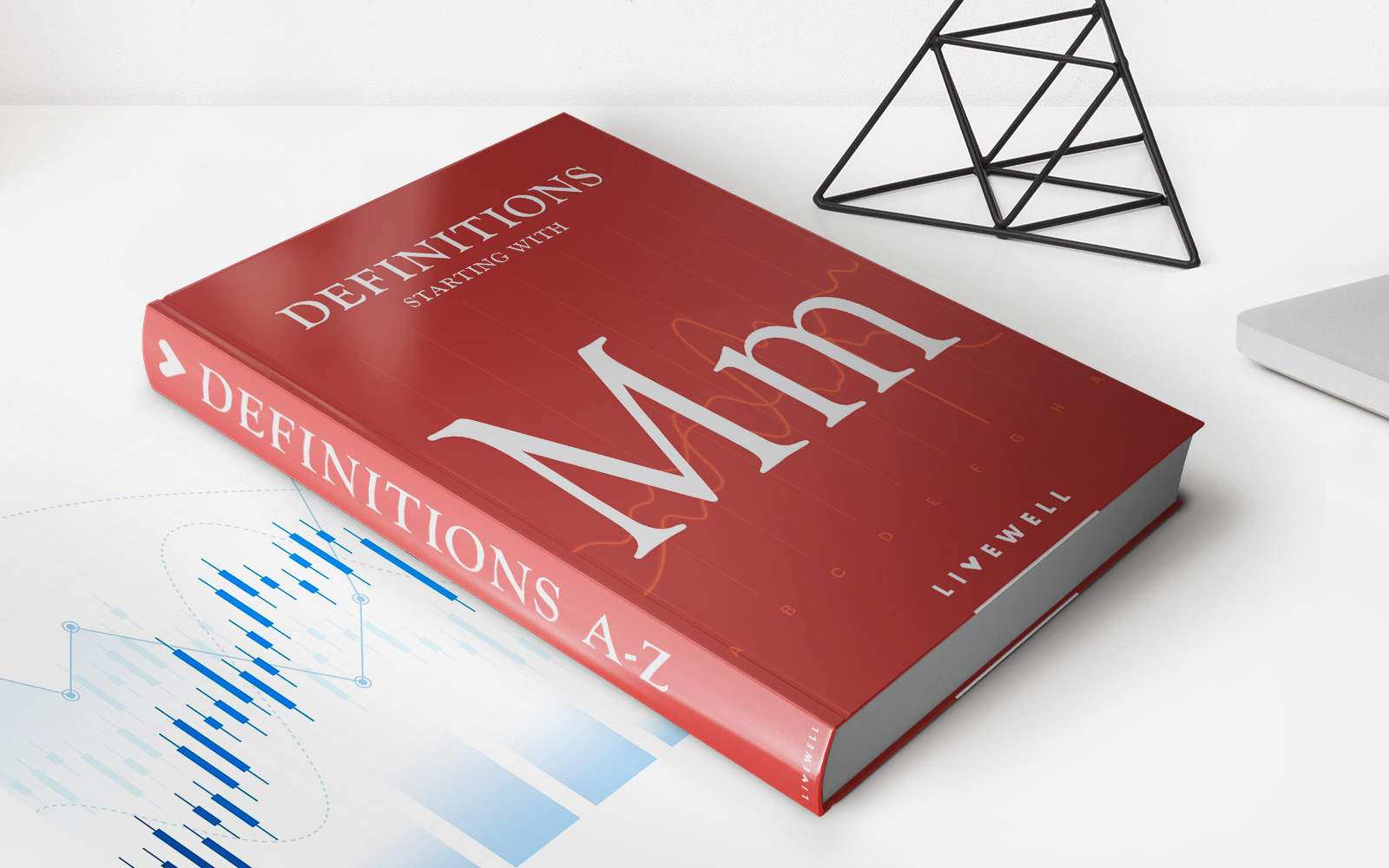

Finance
What Does COA Mean In Accounting
Published: October 10, 2023
Discover what COA means in accounting and how it relates to finance. Gain valuable insights into the importance of COA in financial management.
(Many of the links in this article redirect to a specific reviewed product. Your purchase of these products through affiliate links helps to generate commission for LiveWell, at no extra cost. Learn more)
Table of Contents
- Introduction
- Definition of COA in Accounting
- Purpose of a COA in Accounting
- Structure and Components of a COA
- Importance of a COA in Accounting
- Benefits of Using a COA in Accounting
- How to Create a COA in Accounting
- Maintaining and Updating a COA
- Common Mistakes to Avoid in COA Design and Implementation
- Conclusion
Introduction
Welcome to the world of accounting, where numbers tell a story and financial transactions are meticulously recorded. In the vast realm of accounting, there are various terminologies and concepts that practitioners and individuals need to be familiar with to navigate the financial landscape effectively. One such term is COA, which stands for Chart of Accounts.
The Chart of Accounts (COA) is a fundamental component of accounting systems, providing a systematic framework for organizing and categorizing financial transactions. It serves as a vital reference tool that helps businesses, organizations, and individuals maintain accurate and consistent financial records.
A well-structured COA is essential for accurate financial reporting, decision-making, and compliance with accounting standards and regulations. This article will delve into what COA means in accounting, its purpose, structure, importance, and how to create and maintain it effectively.
Whether you are an aspiring accountant, a small business owner, or simply someone interested in understanding the world of finance, this article will provide valuable insights into the significance of a Chart of Accounts in accounting.
Definition of COA in Accounting
The Chart of Accounts (COA) is a comprehensive listing of all the accounts used by an organization to record financial transactions. It provides a systematic framework for classifying and organizing these accounts in a logical and consistent manner.
Each account in the COA represents a unique aspect of a company’s financial activities, such as assets, liabilities, equity, revenue, and expenses. These accounts are assigned a unique code or number to facilitate easy identification and categorization.
For example, under the assets section of the COA, there might be accounts for cash, accounts receivable, inventory, and property. Under the liabilities section, accounts for accounts payable, loans payable, and accrued expenses may be included.
The COA serves as the foundation of an organization’s financial record-keeping system. It not only defines the categories and subcategories of accounts but also establishes the relationships and hierarchies between them.
By using a standardized COA, businesses ensure consistency and uniformity in their financial reporting. This allows for easier comparison and analysis of financial data over time and across different organizations.
It is important to note that the COA can vary from one organization to another. While certain accounts are generally accepted and commonly used, organizations have the flexibility to customize their COA based on their specific needs and industry requirements.
In summary, the Chart of Accounts is a systematic framework that organizes and categorizes financial transactions into accounts. It provides clarity, consistency, and structure to an organization’s financial record-keeping process, making it an essential tool in accounting.
Purpose of a COA in Accounting
The primary purpose of a Chart of Accounts (COA) in accounting is to provide a standardized and structured system for classifying and organizing financial transactions. It serves as a roadmap that guides the recording, reporting, and analysis of an organization’s financial data. Here are some key purposes of a COA:
- Accurate Financial Reporting: A well-designed COA ensures that financial transactions are consistently recorded in the appropriate accounts. This allows for accurate and reliable financial reporting, both internally and externally. It helps businesses generate essential financial statements, such as the balance sheet, income statement, and cash flow statement, which are crucial for decision-making and compliance with regulatory requirements.
- Facilitating Analysis and Decision-making: A properly structured COA enables businesses to analyze and interpret financial data effectively. It allows for the identification of trends, patterns, and anomalies in financial transactions, enabling informed business decisions and strategies. For example, by categorizing expenses into specific accounts, such as advertising, salaries, or rent, businesses can assess the effectiveness of their spending and make adjustments accordingly.
- Enabling Cost Allocation: The COA facilitates the allocation and tracking of costs across different departments, projects, or products. By assigning specific accounts for different cost elements, businesses can accurately allocate expenses and assess the profitability and cost-effectiveness of various operations.
- Enhancing Internal Control: A well-structured COA strengthens internal control mechanisms within an organization. It ensures that financial transactions are adequately authorized, recorded, and reconciled. By clearly defining the accounts and their corresponding codes, the COA helps prevent errors, fraud, and unauthorized transactions.
- Streamlining Tax Reporting: The COA simplifies the process of tax reporting by providing a clear breakdown of various revenue and expense categories. It allows businesses to categorize income and expenses in accordance with tax regulations, making tax filings more accurate and efficient.
- Supporting Audit Processes: In the event of an audit, a well-maintained COA provides a comprehensive record of financial transactions and their corresponding documentation. It serves as a reference tool for auditors to verify the accuracy and completeness of financial statements and assess an organization’s compliance with accounting standards and regulations.
In summary, the purpose of a COA in accounting is to establish a standardized and organized system for classifying and recording financial transactions. It enables accurate financial reporting, informed decision-making, cost allocation, internal control, tax compliance, and audit readiness.
Structure and Components of a COA
The structure and components of a Chart of Accounts (COA) can vary depending on the specific needs and requirements of an organization. However, they generally consist of the following key elements:
- Account Codes or Numbers: Each account in the COA is assigned a unique code or number. These codes provide a systematic way of identifying and categorizing accounts. The codes can be numeric, alphanumeric, or a combination of both, depending on the organization’s preference.
- Account Titles: Account titles describe the nature or purpose of each account. They provide a concise and meaningful name for easy identification and understanding. For example, account titles could include Cash, Accounts Receivable, Sales Revenue, or Office Supplies Expense.
- Account Types: Accounts in the COA are categorized into different types based on their nature or function. The main account types usually include assets, liabilities, equity, revenue, and expenses. These types help classify accounts and determine their role in the financial statements.
- Account Subcategories: Within each account type, subcategories can be established to further classify accounts. For example, under the revenue account type, subcategories could include sales revenue, interest income, or rental income. Subcategories provide more detailed classification and organization of accounts.
- Hierarchy and Grouping: The COA may have a hierarchical structure that groups similar accounts together. This allows for quick identification and analysis of related accounts. For example, assets accounts may be further grouped into current assets and non-current assets, while expenses accounts can be grouped by department or expense type.
- Account Descriptions: Account descriptions provide additional information and details about the purpose, scope, or specific usage of a particular account. These descriptions help users understand the account’s function and enable accurate recording and reporting of financial transactions.
Creating a logical, well-organized structure for the COA is essential for its effectiveness. The structure should align with the organization’s business operations, industry practices, and reporting requirements. It should also be flexible enough to accommodate future changes and expansion.
While the COA’s structure and components may vary, the key objective is to establish a consistent and meaningful framework for organizing and classifying financial transactions. A well-designed COA enhances the accuracy and efficiency of financial reporting, analysis, and decision-making processes.
Next, let’s explore the importance of a COA in accounting.
Importance of a COA in Accounting
The Chart of Accounts (COA) plays a crucial role in accounting and financial management. It serves as a foundation for accurate and reliable financial record-keeping, reporting, and analysis. Here are some key reasons why a well-designed COA is important:
- Consistency and Standardization: A standardized COA ensures consistency in how financial transactions are recorded and classified within an organization. This promotes uniformity in financial reporting, allowing for easy comparison and analysis of data across time periods and different entities. It also facilitates seamless communication with stakeholders, such as investors, creditors, and regulatory bodies.
- Accurate Financial Reporting: A properly constructed COA ensures that financial transactions are recorded in the appropriate accounts. This accuracy is essential for generating reliable and informative financial statements, such as the balance sheet, income statement, and cash flow statement. These statements provide valuable insights into an organization’s financial health and performance, enabling informed decision-making by management and external users.
- Efficient Data Analysis: By categorizing financial data into specific accounts, a COA facilitates data analysis and interpretation. It allows businesses to track and evaluate various aspects of their financial performance, such as revenue sources, cost categories, and profitability by product, project, or department. This analysis helps identify trends, patterns, and areas for improvement, ultimately aiding in strategic decision-making and resource allocation.
- Better Cost Control: A well-structured COA supports effective cost control and management. It enables businesses to track and monitor expenses across different categories and subcategories. With this visibility, organizations can identify areas of excessive spending, evaluate cost-saving measures, and make informed decisions to optimize resources and improve profitability.
- Compliance with Regulations: Many accounting standards and regulatory bodies require the use of a COA for financial reporting and compliance purposes. By following a standardized COA, businesses ensure adherence to accounting principles and regulations. This reduces the risk of non-compliance penalties and enhances the credibility and transparency of financial statements.
- Support for Decision-making: A well-implemented COA provides reliable and relevant financial information needed for decision-making. It allows management to assess the financial impact of potential strategies, evaluate the performance of various business segments, and make informed decisions based on accurate and up-to-date financial data.
In summary, a well-structured and maintained COA is essential for accurate financial reporting, effective data analysis, cost control, compliance with regulations, and informed decision-making. It enhances the overall financial management of an organization and contributes to its success and sustainability.
Benefits of Using a COA in Accounting
Implementing and utilizing a well-designed Chart of Accounts (COA) in accounting provides numerous benefits for businesses and organizations. Let’s explore some key advantages of using a COA:
- Standardization and Consistency: A COA ensures that financial transactions are consistently recorded and classified in a standardized manner. This promotes consistency in financial reporting within an organization and facilitates comparison and analysis of data across time periods and entities.
- Accurate Financial Reporting: By providing a systematic framework for categorizing transactions, a COA enables accurate and reliable financial reporting. This ensures that financial statements comply with accounting standards and regulations, enhancing the credibility and transparency of financial information.
- Efficient Record-Keeping and Analysis: The organization and structure of a COA make it easier to maintain and navigate financial records. It allows for efficient retrieval of specific information and facilitates data analysis and interpretation. With a well-structured COA, businesses can gain valuable insights into their financial performance and make informed decisions.
- Facilitates Tax Compliance: A properly maintained COA simplifies tax reporting and compliance. It enables businesses to properly categorize income, expenses, and other financial information to meet tax regulations. This reduces the risk of errors and penalties and ensures timely and accurate tax filings.
- Enhances Cost Control and Budgeting: The classification of expenses in a COA enables businesses to track and control costs effectively. It allows for better analysis and management of various expense categories, enabling cost-saving measures and optimizing resource allocation. Additionally, a COA facilitates budgeting by providing a clear overview of income and expense categories.
- Informs Decision-Making: With a COA, management can access accurate and timely financial information to support strategic decision-making. The organized structure of accounts provides insights into revenue sources, expenses, profitability, and financial ratios. This enables informed decision-making, allowing businesses to pursue growth opportunities, allocate resources wisely, and mitigate financial risks.
- Facilitates Auditing and Compliance: During audits, a well-maintained COA helps streamline the process by providing a clear record of financial transactions and their corresponding documentation. It aids in verifying the accuracy and completeness of financial statements and assists in compliance with auditing standards and regulatory requirements.
In summary, the use of a well-designed COA brings significant benefits to accounting processes. It ensures consistency, accuracy, and efficiency in financial reporting, analysis, tax compliance, cost control, and decision-making. By implementing and maintaining a COA, organizations can optimize their financial management practices and enhance overall performance and success.
How to Create a COA in Accounting
Creating a Chart of Accounts (COA) is a critical step in setting up an effective accounting system. Here are the key steps to follow when creating a COA:
- Identify Account Categories: Determine the main categories of accounts that align with your organization’s financial structure and reporting needs. Common categories include assets, liabilities, equity, revenue, and expenses.
- Subcategorize Accounts: Within each main category, identify subcategories that provide additional granularity and organization. For example, under expenses, you might have subcategories like salaries, rent, utilities, and marketing expenses.
- Assign Account Numbers or Codes: Allocate a unique numeric or alphanumeric code to each account to facilitate easy identification and organization. Develop a logical numbering system that reflects the hierarchy and grouping of accounts.
- Create Account Titles: Craft descriptive and clear account titles that accurately represent the purpose or nature of each account. Use standard accounting terminology and avoid vague or generic names.
- Establish Account Types: Classify accounts based on their nature or function, such as assets, liabilities, equity, revenue, and expenses. This helps classify accounts correctly and ensures proper financial reporting.
- Define Account Descriptions: Provide detailed explanations or instructions for each account, including any specific recording requirements or guidelines. Account descriptions help ensure consistency and understanding among accounting staff.
- Consider Reporting Needs: Take into account any specific reporting requirements for your organization, industry, or regulatory bodies. Incorporate accounts and subcategories that align with these reporting needs to facilitate accurate and timely reporting.
- Review and Modify: Regularly review and refine your COA to accommodate changes in your organization’s financial structure, operations, or reporting requirements. Seek input from stakeholders, such as accountants or financial advisors, to ensure the COA remains effective and relevant.
When creating a COA, it is important to tailor it to the specific needs of your organization. Consider factors such as the size and complexity of your business, industry regulations, and your reporting and analysis requirements.
Additionally, it can be helpful to use accounting software or tools that provide templates or guidelines for creating a COA. These resources can streamline the process and ensure compliance with accounting standards and best practices.
Remember, the goal of creating a COA is to establish a structure that promotes accurate financial reporting, analysis, and decision-making. By following these steps and regularly reviewing and updating your COA, you can develop a robust accounting system that meets the needs of your organization.
Maintaining and Updating a COA
Maintaining and regularly updating a Chart of Accounts (COA) is essential to ensure its effectiveness and relevance in reflecting the financial activities of an organization. Here are some key factors to consider when maintaining and updating a COA:
- Regular Review: Schedule regular reviews of your COA to ensure its accuracy and alignment with your organization’s evolving financial structure and reporting needs. This can be done annually or when significant changes occur, such as expansion, acquisitions, or changes in accounting standards.
- Document Changes: Document any modifications or updates made to the COA. Clearly record the reason for the change, the date it was implemented, and any impacts on financial reporting or analysis. This documentation helps maintain transparency and enhances accountability within your organization.
- Consult with Professionals: Seek advice from accounting professionals or consultants when making substantial changes to your COA. Their expertise can help ensure that the updates comply with accounting standards and industry best practices.
- Consider Reporting Requirements: Stay informed about any changes in reporting requirements imposed by regulatory bodies or industry standards. Update your COA accordingly to meet these requirements and facilitate seamless compliance with financial reporting obligations.
- Communication and Training: Communicate any updates or changes to your COA to all relevant stakeholders, including accounting staff, managers, and other individuals involved in financial record-keeping or reporting. Provide training if necessary to ensure everyone understands the new structure and usage of accounts.
- Integration with Accounting Software: If you use accounting software, ensure that your COA is appropriately integrated into the software system. Regularly update account codes, titles, and descriptions within the software to reflect any changes made to the COA.
- Ensure Consistency: Maintain consistency in the usage of accounts across all financial transactions. Monitor the proper recording and classification of transactions to ensure that accounts are consistently applied according to the COA. This consistency enhances the accuracy and reliability of financial reporting.
- User Feedback: Encourage users of the COA to provide feedback on its usability and effectiveness. Gather input from accounting staff, managers, and other stakeholders to identify any areas for improvement or adjustments to the COA structure.
Remember, maintaining and updating the COA is an ongoing process. It requires regular attention and adaptation to ensure it continues to meet the needs of your organization. A well-maintained COA enhances financial reporting accuracy, analysis, and decision-making, contributing to the overall financial health and success of the organization.
Common Mistakes to Avoid in COA Design and Implementation
When designing and implementing a Chart of Accounts (COA), certain mistakes can hinder its effectiveness and lead to challenges in financial reporting and analysis. Here are some common mistakes to avoid:
- Insufficient Planning: Failing to carefully plan and design your COA can result in a structure that does not adequately reflect your organization’s financial activities and reporting needs. Take the time to understand your requirements and seek input from accounting professionals to ensure a well-thought-out COA.
- Overly Complex Structure: Creating a COA with too many accounts, subcategories, or levels of hierarchy can make it confusing and convoluted. Aim for a balance between providing detailed information and maintaining simplicity for ease of use and understanding.
- Lack of Standardization: Avoid inconsistencies in account numbering, titles, or classification across different departments or branches. Lack of standardization can result in confusion, errors, and difficulty in aggregating or analyzing financial data.
- Inflexibility: Failing to design a COA that is adaptable to changes in your organization can lead to challenges down the line. Account for potential growth, acquisitions, or changes in accounting standards to ensure your COA remains relevant and scalable.
- Failure to Align with Reporting Requirements: Neglecting to align your COA with regulatory requirements or industry standards can result in non-compliance and difficulties in financial reporting. Stay informed about any changes in reporting guidelines and adjust your COA accordingly to ensure compliance.
- Lack of User Training: Inadequate training on the COA and its usage can lead to misclassification of transactions or inconsistent application. Provide comprehensive training to accounting staff and other users to ensure a proper understanding of the COA’s structure, codes, and account usage.
- Not Seeking Input from Stakeholders: Failing to involve relevant stakeholders, such as accounting staff, managers, or other users, in the COA design process can result in a structure that does not meet their needs or preferences. Encourage feedback and incorporate input to enhance the usability and effectiveness of the COA.
- Inadequate Documentation: Neglecting to document changes or modifications made to the COA can lead to confusion or lack of transparency. Document any updates or revisions to the COA structure, codes, or guidelines to ensure clarity and accountability.
By avoiding these common mistakes, you can ensure a well-designed COA that accurately reflects your organization’s financial activities, supports accurate reporting and analysis, and facilitates informed decision-making.
Conclusion
The Chart of Accounts (COA) is a vital component of an organization’s accounting system. It provides a structured framework for classifying, recording, and analyzing financial transactions. By organizing accounts into categories and subcategories, the COA enables accurate financial reporting, informed decision-making, and compliance with regulations.
Throughout this article, we explored the definition, purpose, structure, importance, and benefits of using a COA in accounting. We discussed how a well-designed COA promotes consistency, accuracy, and efficiency in financial reporting, analysis, and decision-making processes. We also highlighted the key steps in creating and maintaining a COA, emphasizing the importance of regular reviews, communication, and flexibility to adapt to changing business needs.
Avoiding common mistakes in COA design and implementation is crucial for ensuring its effectiveness. Mistakes such as insufficient planning, complex structures, lack of standardization, and failure to align with reporting requirements can hinder accurate financial reporting and analysis.
By developing a comprehensive and well-maintained COA, organizations can enhance financial management practices, improve cost control, and make informed decisions based on reliable and timely financial information. A well-implemented COA supports compliance with regulations, facilitates auditing processes, and enhances the overall financial health and success of an organization.
As accounting practices evolve and businesses grow, it is essential to regularly review and update the COA to accommodate changes in financial structures, operations, and reporting requirements. By keeping the COA current and aligning it with industry standards, organizations can ensure their financial records accurately reflect their business activities.
In conclusion, a well-designed and maintained COA is crucial for accurate financial reporting, informed decision-making, and effective financial management. By following best practices in COA design, implementation, and maintenance, organizations can build a strong foundation for financial success and growth.














